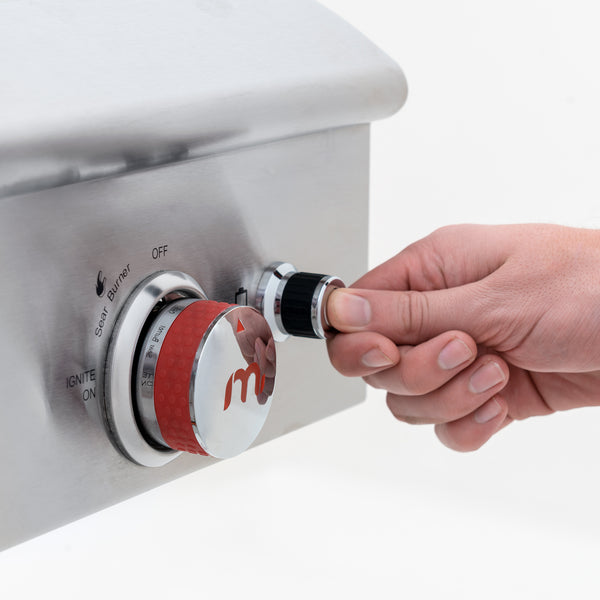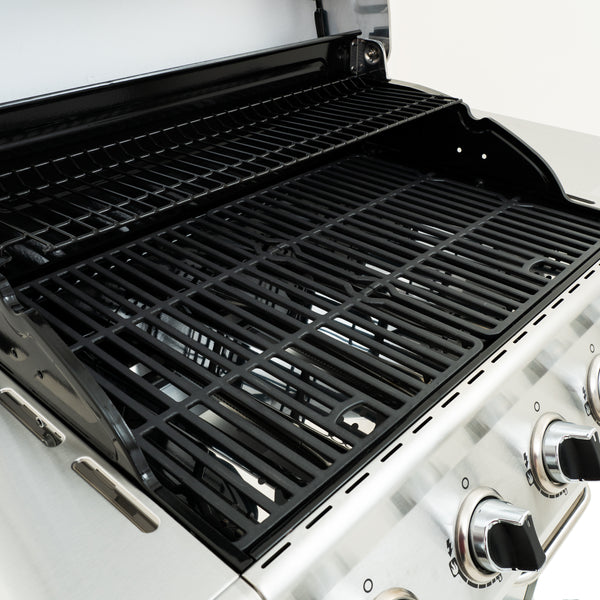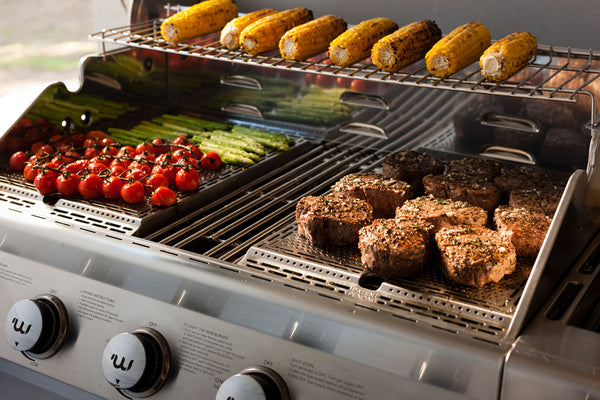
Why is Your Gas Grill Not Getting Hot Enough? How to Fix a Grill that Only Heats Up to 200-300 Degrees
Summer is here, and with that comes many lazy afternoons spent with friends and loved ones around a sizzling gas grill. But the joy of a smoky barbecue picnic can quickly evaporate when the food remains uncooked because of a defective or broken grill. Amazing as they are, there are many things that can go wrong with a gas grill, and one of them is a grill that’s not getting hot enough to cook the foods placed on it. Read on for helpful tips, tricks, and advice on how to troubleshoot a grill that’s not getting hot enough.Common Reasons for a Gas Grill Only Heating Up to 200-300 Degrees
A gas grill only heating up to around 200-300 degrees is a more common problem than you may realize. In fact, any drastic variation from your grill’s usual cooking temperature most likely signals an issue to be addressed. But to be precise, most gas grills should be able to heat up to 500-550 degrees Fahrenheit in about 10-15 minutes.Although all appliances naturally decrease in performance over time, gas grills still need to run hot. So, when they only heat up to around 200-300 degrees, it's time to look at reasons for why this may be happening.
Some common reasons for a gas grill not getting hot enough include:
- A faulty temperature gauge
- Gas leaks from the grill’s regulator hose
- An empty or near-empty propane tank
- Low flames produced by burners
Grill Not Hot Enough? Check That Your Temperature Gauge Is Working Properly
Have you ever considered that your grill might be reaching the correct temperature, but its temperature gauge is simply giving an incorrect reading?A temperature gauge is a tool that monitors the temperature of a specific item. When the temperature of the item changes, the gauge's internal pressure changes too. This pressure is then redirected to a pointer that indicates temperature.

Instead of your grill not running hot enough, its gauge may not be reading the temperature correctly. This isn’t uncommon for some grill models, especially those that still use old-school, dial temperature gauges.
That's because the positioning of these temperature gauges places them far from the food being cooked – and close to the air outside. This outside air is cooler, which affects the way the gauge reads the temperature. This is also the reason why temperature gauges usually run about 50-75 degrees cooler than the heat at which the food is cooking.

Checking that your grill temperature is working as it should be
Fixing or replacing your grill’s temperature gauge will help you set your cooking temperatures more precisely. To know if your grill’s temperature gauge is inaccurate, prop up a thermometer probe one inch above the grill and as close to the food cooking on the grilling grate as possible. For a more reliable (but more expensive) method, use a thermocouple (a sensor for measuring temperature) instead.If these tests indicate that your grill’s temperature gauge is faulty, it is time to replace this grill part.
Need grill parts replacement? Search for temperature gauge replacement parts here.
Also keep in mind that many grilling fanatics love to use thermometer probes and thermocouple accessories, even if they own a grill with a great built-in thermometer. Thermometer probes and thermocouples are incredibly accurate and work well no matter what grill they're used with.
Find the perfect temperature-reading accessory for your grill here.
Grill Not Hot Enough? Check Your Grill’s Regulator Hose
Gas fuels a grill's fire. So, when a lot of it escapes before it can burn, a weak flame is usually the result. Often, the problem lies with the gas cylinder or its connected parts.
Gas escaping from a leaking gas cylinder valve, hose or regulator could be a reason for your grill not getting hot enough. When the gas cylinder is filled and its hose and valve connected properly, with no damage anywhere, no gas will leak. But if this is not the case, gas may flow out of the tank, its hose or at points of connection, resulting in wasted gas. That's not only bad news for your culinary endeavors, but also for the environment.
How to Check Your Grill’s Gas Valve, Hose and Regulator for Gas Leaks
A gas leak test will let you know if there's any room for gas to escape. Here's how to run this simple test:- Connect the gas hose to the tank
- Make a soapy solution of 1:1 liquid dish soap:water
- Turn off all burner control knobs
- Apply the soapy solution to the gas tank valve, hose, and regulator, and all other valve connections
- Turn on the gas tank valve
- Look out for any soapy bubbles forming anywhere on the tank, valve or along the hose.
In such a case, immediately close the valve and don’t use the grill until the problem has been resolved. Contact a professional to carry out the necessary repairs. Alternatively, you can replace the hose with a new one.
Need grill parts replacement? Search for gas valve, hose, and regulator replacement parts here.
Grill Not Hot Enough? It Might Be Time to Replace Your Propane Tank
Propane tanks are containers that hold the propane gas that fuels a grill's flames. Some gas grill owners won't know that their propane tanks are low on fuel until they're unable to supply sufficient gas to the grill to cook food. This issue can be fixed by simply swapping out the empty propane tank for a full one.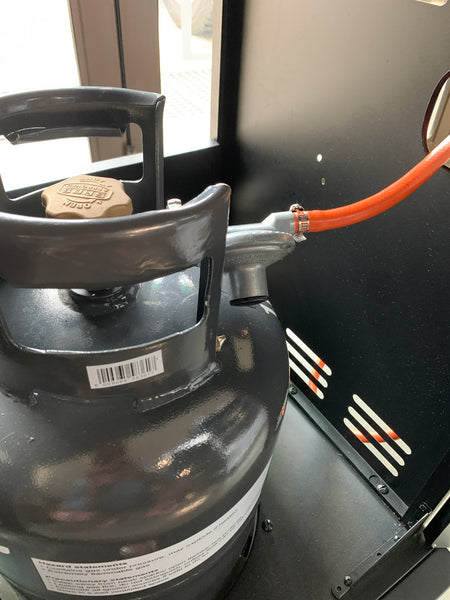
How To Check Your Propane Tank’s Gas Level
- Prepare a quart of hot water.
- Pour it over the side of the propane tank.
- Run your hand down the side of the propane tank from the bottom up.
- Search for the point along the outside of the propane tank where the cold sensation ends.
Propane gas will make the tank feel cold, while air inside the tank will make the tank feel hot. If the tank feels mostly cold, that means there's a lot of propane gas left. If it’s the other way around, it is time to get your propane gas tank refilled.
What To Do If You Smell Gas From Your Grill’s Propane Tank
Smelling gas while using your gas grill, especially when it’s coming from its propane tank, should always be a reason for extreme caution.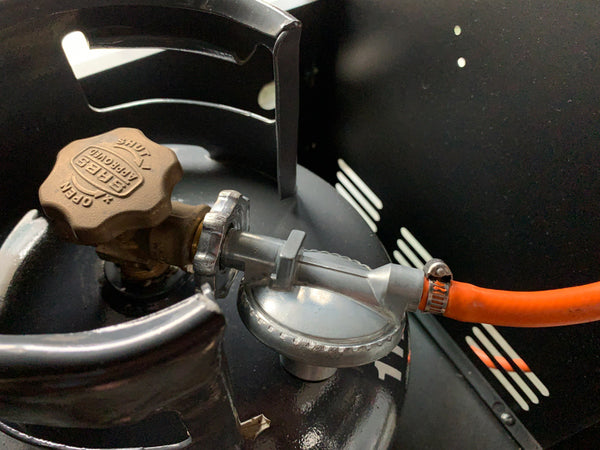
Should you ever smell gas around your grill, immediately turn the propane tank’s valve to the “off” position and call your gas grill manufacturer’s customer service department for advice on how to proceed with solving this issue. Do not use your gas grill until this issue has been resolved.
Low Flames? Check Your Gas Grill’s Regulator
Low flames from your gas grill’s burners could be the result of the grill’s regulator not functioning properly. Without a fully functioning regulator, there's no way for your gas grill to produce the steady flames required for a great barbecue.These are the telltale signs of a faulty gas grill regulator:
- Popping noises when the grill is turned on or off <link to blog "Gas Grill Making Noises>
- Weak orange or yellow flames from burners
- Low flames from burners
- Heavy soot deposits on burners
- Roaring sounds from burners
- Flames spilling out of burners
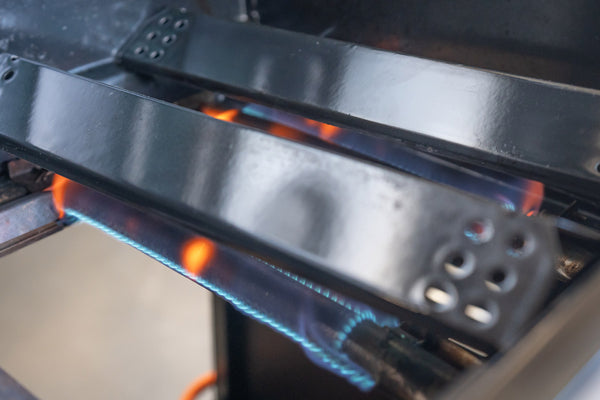
Resetting Your Gas Grill’s Regulator
If your grill’s regulator is causing problems, try resetting it. Every gas grill model is different, so it's always advisable to first check your grill’s owner manual for specific troubleshooting instructions on how to reset its regulator.Here are some general gas grill regulator reset instructions:
- Turn all your grill knobs to “off”. Close the propane tank valve completely (to stop the gas flow).
- Disconnect your grill’s regulator from the propane tank. Carefully follow the guidelines in your grill’s owner manual when you do this.
- Wait 60 seconds. Then, reconnect the regulator to the propane tank. Follow the guidelines in your grill’s owner manual when reconnecting the regulator to the propane tank.
- Open the propane tank valve very slowly to turn the gas flow back on. Take a full 30 seconds to turn the propane tank valve until it is completely open.
- Wait another 60 seconds. Now, light your grill following the instructions on the control panel.
Having gone through this process, you'll most likely end up with a regulator that's been reset and almost as good as new. If your grill’s regulator is still giving you problems after going through the above steps, you will either need to replace the regulator – or the gas grill.

Need grill parts replacement? Search for gas grill regulator replacement parts here.
How To Know When To Replace Your Old, Inefficient Gas Grill With a Newer Model
Did you know that, on average, Americans replace their gas grill after just three years? But most gas grills today are designed to last between 5 to 15 years before requiring replacement.A big factor in how long your gas grill will last is the level of care and maintenance it receives during use, and it would be rather foolish (not to mention expensive) to buy a new gas grill, when all it requires is some new parts. If your grill is still under warranty, having it repaired is definitely the way to go.
The majority of gas grill replacement parts (including grilling grates, burners, igniters, lids, thermostats, hoses and connectors) can all be ordered online and replaced quite easily and affordably.
However, if your gas grill has a severely rusted, cracked or corroded firebox, it may be time to dip into those savings and start shopping around for a new model.

Need grill parts replacement? Find all the parts you need to get back to grilling at mygrillparts.com
